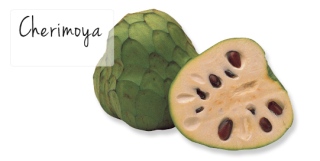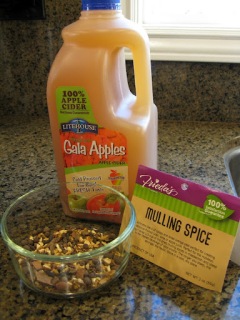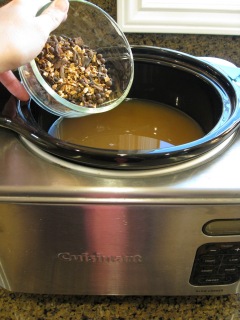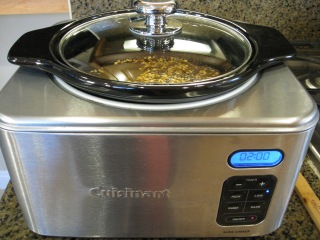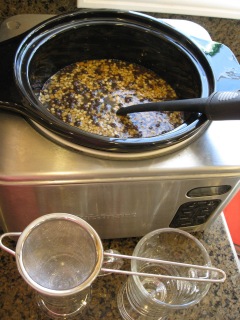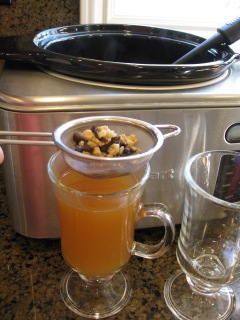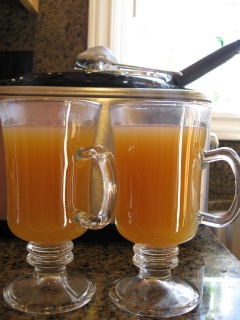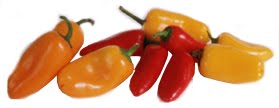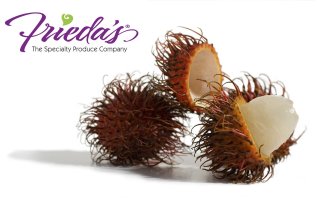Patriotic Potatoes
July 2, 2012
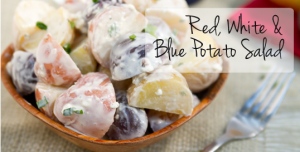 How about a red, white and blue potato salad for your 4th of July barbecue? Use a combination of red, white and purple potatoes to show off your patriotic culinary side. Frieda’s Specialty Produce offers a 2-pound bag of this colorful medley called Star Spangled Spuds.
How about a red, white and blue potato salad for your 4th of July barbecue? Use a combination of red, white and purple potatoes to show off your patriotic culinary side. Frieda’s Specialty Produce offers a 2-pound bag of this colorful medley called Star Spangled Spuds.
Frieda’s Star Spangled Spuds are delicious baked, roasted or boiled and tossed with butter and herbs to let their beautiful colors show, or great for creating a tri-color potato salad, such as Frieda’s Red, White and Blue Potato salad.
Red, White and Blue Potato Salad
1 2-pound bag Frieda’s Star Spangled Spuds (or red, white and purple potatoes)
3/4 cup chopped green onions, divided
2/3 cup sour cream
1/3 cup mayonnaise
3 Tbsp. white wine vinegar
3 tsp. Dijon mustard
1 1/2 tsp. sugar
1 1/2 tsp. salt
1/2 tsp. ground pepper
2 to 3 ounces crumbled blue cheese
Put potatoes in a large pot and add enough salted water to cover. Bring to a boil and boil potatoes until fork tender – about 15 minutes. Drain potatoes and cool.
While potatoes cool, prepare the dressing. In a medium bowl, blend half of the green onions with the sour cream, mayonnaise, white wine vinegar, Dijon mustard, sugar, salt and pepper. Cover and chill.
Slice the potatoes into 1/2-inch slices or chunky quarters and place into large bowl. Add chilled dressing, blue cheese and remaining green onions; toss gently to coat potato pieces. (Add additional blue cheese, if desired.) Cover and chill for at least two hours, or up to one day. Flavors will continue to blend as the salad chills. Makes about 6 to 8 cups.
Source: Frieda’s Specialty Produce Co.
Cheer for Cherimoya!
April 2, 2012
The scaly-green skin covering this strange heart-shaped fruit acts as an unfortunate deterrent to the delightfully sweet and ambrosia-like fruit within. The Cherimoya has been cultivated and loved for centuries in South America, but this sub-tropical delight is only beginning to make an appearance in U.S. produce markets.
Frieda’s Specialty Produce currently distributes the cheerful Cherimoya to grocery stores around the country, and the company recommends looking beyond its strange appearance and sinking your teeth into one of the most delicious fruits you’ve ever tasted!
Inside the Armadillo-like skin is a creamy-white flesh with large, black seeds. When ripe, the flesh gives slightly to the touch – much like a ripe avocado. The taste is often described as a familiar and fragrant combination of pineapple, banana and vanilla with a custard-like texture. (In fact, another name for the fruit is “custard apple.”) Once ripe, the Cherimoya is excellent when chilled, enjoyed in wedges or scooped with a spoon. The soft flesh is also a nice addition to fresh fruit smoothies, blended drinks and a variety of fruit-based desserts.
Here’s one delicious way to enjoy this tropical specialty from Frieda’s:
CHERIMOYA CUSTARD PIE
This pie turns deep golden brown and puffs up when it bakes, then settles upon cooling. The texture is light and airy, and the flavor is like nothing you’ve ever tasted!
1 10-inch unbaked deep-dish pie shell
1 1-lb. ripe Frieda’s Cherimoya, peeled, seeded and diced
3 eggs, separated
1 cup evaporated milk
1/2 cup granulated sugar
1/2 tsp. vanilla
1/8 tsp. salt
Sweetened whipped cream
Preheat oven to 450 F. Bake pie shell 5 minutes; set aside. Reduce oven to 375 F. In blender or food processor, puree cherimoya chunks until smooth. Whisk in egg yolks, milk, sugar, vanilla and salt until blended. Set aside. In a separate bowl, beat egg whites (electric mixer on high) just until soft peaks form. Fold whites into cherimoya mixture until no streaks of white remain (do not stir). Pour filling into crust. Place in oven; bake 35-40 minutes or until filling is set, and knife inserted halfway between center and edge of filling comes out clean. Cool; refrigerate. Serve wedges topped with sweetened whipped cream. Makes one 10-inch deep-dish pie.
Source: Frieda’s, Inc.
Warm and cozy with mulling spices
November 21, 2011
Ahh. The warm scent of cloves, allspice and cinnamon. Cooking with these spices fills up a room with a lovely, comforting aroma that always reminds me of the holidays. There’s no better time to brew up some hot mulled cider!
To make mulled cider or mulled wine, you can use any blend of spices you like, but typically, mulling spices include cloves, allspice, cinnamon and orange peel. Frieda’s has a 3-ounce bag of mulling spices ready to go. It contains whole dried allspice berries, big chunks of cassia cinnamon, whole cloves and pieces of dried orange peel.
The ratio of spice to juice is about 1/4 to 1/3 cup of spice to a half-gallon of juice. I used Litehouse Gala Apple Cider.
I didn’t have cheesecloth handy to make a spice sachet, so I just put the loose spices right into the pot with the juice.
I heated the cider in my slow cooker for 2 hours on low. The house smelled fabulous!
I just strained the juice to serve. I also strained the remaining cider and refrigerated it for later enjoyment.
Yum! If I had cinnamon sticks handy, they would have been perfect in these glasses with a wedge of orange or lemon. The perfect warming winter drink! (If you are feeling more naughty than nice, you can always add a splash of brandy to your mulled cider for a little extra warmth…)
Cheers,
Hazel
Fresh Young Coconuts: It’s all about the water
September 20, 2011
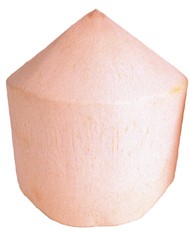 Coconuts are getting pretty trendy these days, especially the fresh juice or “coconut water” stored inside the shells of these tropical delicacies. Now, you don’t have to be in a tropical location to enjoy the water out of a fresh coconut: Frieda’s Specialty Produce distributes fresh, whole Young Coconuts to supermarkets around the country.
Coconuts are getting pretty trendy these days, especially the fresh juice or “coconut water” stored inside the shells of these tropical delicacies. Now, you don’t have to be in a tropical location to enjoy the water out of a fresh coconut: Frieda’s Specialty Produce distributes fresh, whole Young Coconuts to supermarkets around the country.
Not to be confused with coconut milk, coconut water is the clear, sweet, crisp and refreshing liquid known for its amazing hydrating abilities. Coconut water is naturally fat-free and contains an excellent balance of potassium and salt that can replenish your electrolytes during a sweltering day or strenuous work-out. Several brands now manufacture coconut water as a health and sports beverage, but fresh is always best.
Young Coconuts are harvested immature while the skin is still green. For shipping, the green outer skin is pared away to a white cylindrical husk with a pointy, pencil-like tip. Inside the thick, white husk is the familiar round coconut with its hard, fibrous shell. Inside the shell is a cavity filled with sweet, refreshing water and a thin layer of soft, jelly-like flesh.
To open a Young Coconut, you will need a strong, large knife — maybe a meat cleaver. Make 4 deep, straight cuts around the pointed top (about 2 inches from the point) in a square shape. Then pry off the tip. Click here to see an example of what it looks like.
Once you’ve enjoyed your fill of fresh coconut water, scoop out the soft flesh that clings to the inside of the shell. Enjoy this sweet, creamy, rich meat out of hand, or use it in a variety of ways: dice it into fruit salads, blend into shakes and smoothies, or use to make your own coconut milk from scratch. Many like to blend the water and flesh together into a refreshing beverage. Here’s our Pineapple Coconut Smoothie recipe.
Choose heavy coconuts with no cracks, mold or soft wet spots. If you give the Young Coconut a shake, it should be full of liquid with no air inside, so it shouldn’t slosh too much. Keep refrigerated, wrapped in plastic to retain moisture, and use within five days.
Nothing takes you on a tropical escape like drinking the delicious, refreshing water out of a fresh Young Coconut!
Read CEO Karen Caplan’s blog post on coconuts: http://whatsonkarensplate.blogspot.com/2010/03/cuckoo-for-coconuts.html
It’s Hatch Chile Season at Ralphs!
August 1, 2011
What’s a Hatch Chile? These long green chiles are exclusively grown in the Mesilla Valley near Hatch, New Mexico. Their robust, spicy flavor makes them a beloved pepper for chile fans, who go nuts for the zesty aroma as they are roasted over an open flame. Because of the Hatch Chile’s limited season — late summer/early fall – pepper aficionados all over the country flock to New Mexico’s famous Hatch Chile Festival each year over Labor Day weekend. Luckily, Los Angeles and Orange County residents can get their Hatch Chile fix at a local Ralphs supermarket.
This month, Frieda’s Specialty Produce, Orange County-based distributor of exotic fruits and gourmet vegetables, is supplying select Ralphs Grocery stores with loads of the authentic extra hot Hatch variety. And for three Saturdays in August, Ralphs is holding live Hatch Chile roasting events at 6 stores in Orange and Los Angeles Counties.
Buy a 10 lb. or 30 lb. sack of fresh Hatch Chiles at Ralphs and have them tumble roasted outside the store in a flash. Then head to your kitchen to get Hatch happy with salsas, chile rellenos, enchiladas, chili and more. You can also freeze the roasted chiles to extend your Hatch happiness throughout the winter.
Ralphs Hatch Roasting Event Schedule:
10 a.m. – 4 p.m. (or until supplies run out!)
Saturday, Aug. 13
Ralphs – Costa Mesa, 380 E. 17th St. (949) 645-8283
Ralphs – La Canada, 521 W. Foothill Blvd. (818) 790-0584
Saturday, Aug. 20
Ralphs – Los Angeles, 11727 Olympic Blvd., (310) 473-5238
Ralphs – Huntington Beach, 5241 Warner Ave. (714) 377-0024
Saturday, Aug. 27
Ralphs – Tustin, 13321 Jamboree Rd. (714) 544-0491
Ralphs – Pasadena, 3601 E. Foothill Blvd. Pasadena (626) 351-6572
• 10 lb. boxes and 30 lb. sacks available (roasting included)
• Extra Hot Hatch Green Chile variety
• Meet the Frieda’s Street Team at the events for more info and coupons!
Visit www.friedas.com/Hatch for at-home chile roasting and handling tips, recipes and more.
Here’s a quick video to see how the Hatch Chiles are roasted:
Angelcots®: A Taste of Heaven
July 4, 2011
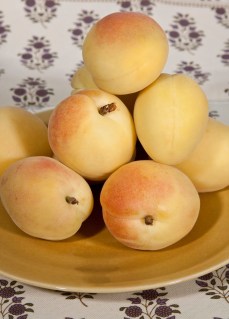 |
| Angelcots(r) – very special white apricots |
Have you ever really tasted a perfect apricot? Oftentimes, the flavor might be good, but the texture might be dry and mealy. Sometimes, the fruit is juicy, but the flavor is weak. However, Frieda’s Specialty Produce wants fruit lovers to know that the perfect apricot does exist, and it’s called an Angelcot®.
This elusive white-flesh apricot is grown in Central California and has a limited season, but those who have the opportunity to taste the Angelcot® will tell you that no other apricot compares. We are shipping these beauties to select supermarkets around the country this week.
Angelcots® are a specialty hybrid of Moroccan and Iranian apricot varieties. There are only a few acres of this special fruit in the world. They have a very pale yellow skin color with a pale peach blush and a very fine velvety fuzz. The inside flesh is extremely juicy with the texture of a perfectly ripe nectarine with the delicate yet intense sweet flavor of an apricot.
These tree-ripened, hand-packed fruits are as close to divine as a fruit can be. Angelcots® are much juicier than a typical apricot and possess a beautiful balance of acid and sugar with a buttery, tropical, perfume-like sweetness.
You haven’t tasted an apricot until you sink your teeth into a heavenly Angelcot®!
Check out Karen Caplan’s (CEO of Frieda’s) blog post about the story of Angelcots: http://whatsonkarensplate.blogspot.com/2010/06/taste-of-heaven.html
Fresh Angelcot® Tart
This simple no-bake tart is a great way to showcase the natural sweetness and juicy texture of white-fleshed apricots.6 to 8 Angelcots® (peeled if desired), pitted and sliced (3 cups)
1 block (8 oz) nonfat cream cheese, sliced
½ cup raspberries
¼ cup sugar
1 pre-made graham cracker pie crust (or pre-baked tart shell of your choice)
½ cup seedless raspberry jamMix the cream cheese, raspberries and sugar in a medium bowl and beat with an electric mixer for 2 minutes, until smooth. Spread over the pie crust and arrange the Angelcot® slices decoratively over the top.
Melt the raspberry jam in a small saucepan over low heat. Spoon over the peaches. Refrigerate at least 2 hours before serving.
Adapted from “Peaches and Other Juicy Fruits” by Olwen Woodier (Storey Publishing: 2004)
Connect with us on Facebook and Twitter to find out if a market in your area will have the Angelcots(r). But act fast, because the season is short!
Perfect Grill-Friend: Baby Bell Peppers
June 27, 2011
These baby bell peppers come in mixed containers of red, orange and vibrant yellow, and are so crisp and sweet and delicious.
* Slice into rings and use as a pizza topping or in sandwiches
* Slice in half lengthwise and stuff with cheese and herbs
(Our friend, Chef Gregg Denter, recently combined Frieda’s Soyrizo with cream cheese to fill these little pepper “boats.” He topped them with roasted pepitas (pumpkin seeds))
* Roast them on the grill, then slice and add to salads and burgers
* Thread on skewers for colorful veggie kebabs
* Serve on veggie platters with hummus and other healthy dips
* Stuff with ground meat and rice mixtures, then bake for bit-size appetizers
* Chop and combine with vinaigrette dressing for a colorful pepper salad
Follow us on Twitter: @FriedasProduce
Watch us on YouTube: FriedasProduce
Rambutan – yes, you can eat it!
May 29, 2011
What looks like a sea urchin and tastes like a delicious tropical grape? Rambutan! Frieda’s is now shipping these punky little fruits to supermarkets around the United States, as the Central American crop is now in season.
Basically a “hairy” Lychee (Rambutan means “hairy” in Malay), Rambutan are grown in clusters on trees in tropical climates, including Guatemala, Honduras, Mexico, Costa Rica, Hawaii (irradiated) Thailand (irradiated) and now Vietnam and Malaysia (irradiated). The name for Rambutan in Spanish is “Mamon Chino.”
There are two main Rambutan colors – red and yellow. Both feature a leathery outer shell decorated with soft spines, and an internal lychee-like fruit surrounding a small seed (fruit does not stick to the seed). The yellow variety is sweeter but with a much shorter shelf life, so these are typically not shipped to the U.S.
If you are adventurous enough to try some fresh Rambutan, you will be delighted by their sweet, juicy tropical flavor — like a tropical grape! To eat them, just pry open the shell with your fingers or score it with a paring knife, then nibble the juicy pearlescent flesh that covers the seed.
Check out these blogs for some more Rambutan inspiration: YumSugar and Steamy Kitchen. (Jaden of the popular Steamy Kitchen blog even writes about how her kids love to play with the Rambutan shells – they become spiky hats for their toys!)
Curious about Lychees? Check out this previous post.
Celestial Starfruit
April 25, 2011
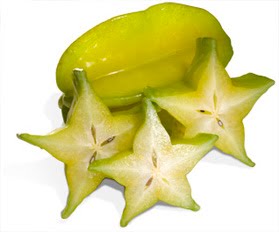 Only one fruit can offer such a stellar shape when sliced cross-wise. The Starfruit, also known as the Carambola, is a beautiful tropical fruit that’s now in season and available in select supermarket produce departments.
Only one fruit can offer such a stellar shape when sliced cross-wise. The Starfruit, also known as the Carambola, is a beautiful tropical fruit that’s now in season and available in select supermarket produce departments.
Starfruits have five prominent ribs running the entire length of the fruit, which can vary from 4 to 10 inches long. The Starfruit’s glossy golden skin encloses a translucent, crispy and juicy flesh. The flavor is sometimes compared to a light lemony apple-grape-pear combination with slight tropical notes.
Starfruit is high in vitamin C, and is fabulously refreshing in the hot summer months. When ripe, the skin turns a pale to golden yellow color with some brown spots along the ridges, which indicate sugar development. (An overripe fruit will be yellow with brown spots.) Refrigerate ripe fruit immediately and consume within a few days.
Grown all over the world in tropical climates, Frieda’s Specialty Produce distributes Starfruit from Taiwan and sometimes Florida. Taiwan-grown Starfruit tend to be larger and firmer than Florida crop.
Starfruit is easy to enjoy fresh, and really adds visual interest to dishes and drinks with those beautiful five-point star slices. Simply slice off the very outer tips of each of the ribs, to remove any of the off-color sugar spots. Then slice the fruit crosswise into star shapes and poke out any seeds.
Add fresh Starfruit slices to fruit salads, fruit and cheese platters, or use to garnish cocktails. Get creative with fruit kebabs and thread star-shaped slices on skewers with other fruits, such as strawberries and kiwifruit.
You can also grill or lightly sauté fresh Starfruit to bring out the natural juices and soften the texture. The slightly sweet lemony flavor makes a nice addition to sweet-and-sour dishes with an Asian flavor profile. Some even blend the juicy fruits into a beverage with sugar and cinnamon for a cooling cocktail.
Here’s a simple, yet glamorous way to serve Starfruit at your next party or gathering:
Champagne Fruit Compote
Suggested sliced and peeled fresh fruit:
Starfruit slices
Kiwifruit slices
Asian Pear slices
Orange or grapefruit sections
Melon chunks
Pineapple wedges
Mango chunks
Champagne or sparkling wine
For each serving, place desired fruit chunks in a long-stemmed glass. Pour champagne or sparkling wine over fruit to cover. Makes as many servings as desired.
Source: Frieda’s Inc.
Frieda’s Inc.: Going on 50!
April 4, 2011
Frieda’s turned 49 on Sunday! That means we are now beginning our 50th year in business! To kick off the start of this momentous year, we are doing a special giveaway for fans of our Facebook page, all month long! But, it’s a surprise! You will have to keep watching our Facebook page throughout the month so you don’t miss out. (Hint: there are lots of Golden Goodies and free prizes!)
Frieda Rapoport Caplan, 87, is the founder of Frieda’s Specialty Produce. She began the little company in 1962 at the Los Angeles Wholesale Produce Market, where she quickly gained a reputation for being open to buy and sell unusual fruits and veggies. Small growers of specialty crops flocked to her. Today, Frieda is a produce industry icon. Frieda is most famous for introducing the kiwifruit to U.S. supermarkets and as the first woman business owner in the U.S. produce industry.
Frieda’s two daughters, Karen Caplan and Jackie Caplan Wiggins, now own and operate the business and continue the legacy of changing the way America eats fruits and vegetables.
Want to know more about this amazing company? Read Karen’s blog: “What’s On Karen’s Plate” and visit us at www.friedas.com!
Check out this short video for a special message from Frieda herself:
http://www.youtube.com/user/FriedasProduce#p/a/u/0/wMDWjl9ilNU
